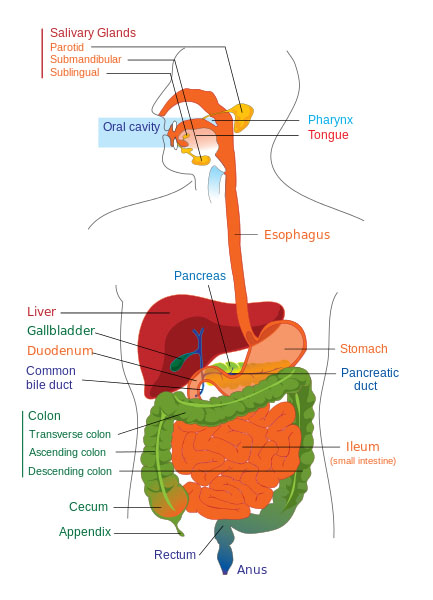Building a Health Digestive System-
Part 1 by Mary Louise;Town Jaqua, Health Minister 12-8-13Most Americans eat with great abandon. Armed
with knife, fork, and spoon, they stuff their mouths
and bellies with little, if any, regard for what they
just ate. Nevertheless, once past the palate and
'down the red lane,' the great exercise of eating
is over and the exercise of digestion begins, a
process that is central to the body's wellbeing.Digestion: What is it?
Digestion is the process of converting food
into nourishment to feed and energize body
cells. Because of its life-sustaining role, the
digestive system is regarded as being the
most important system in the body, the
primary functions of which include:Ingestion of food Secretion of fluids and digestive enzymes Mixing and movement of food and wastes
through the bodyDigestion of food into smaller pieces Absorption of nutrients Excretion of wastes According to Divine design, a group of organs
comprise the digestion system and work
together in the herculean task of transforming
whole foods into usable fuel for the body. The
assisting organs are1. Mouth (teeth, tongue,
salivary glands)
2. Throat
3. Esophagus
4. Stomach
5. Small Intestines
6. Liver and gallbladder
7. Pancreas
8. Large IntestineDigestion: a walk through the process
Learning the mechanics of the digestive
system helps to understand its importance
in order to care for it properly. That the
body is 'fearfully and wonderfully made'
(Psalms 139:14) is evident when tracing
the travel of food from beginning to end.
